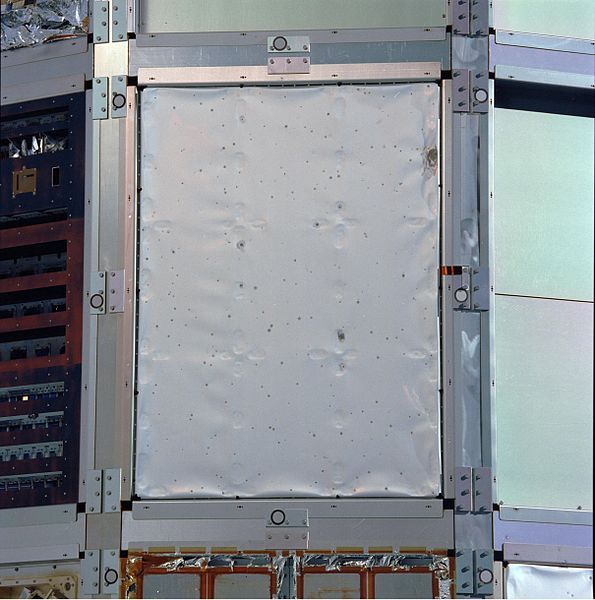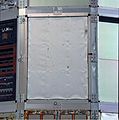File:EL-1994-00019.jpeg
Appearance

Size of this preview: 595 × 600 pixels. Other resolutions: 238 × 240 pixels | 476 × 480 pixels | 762 × 768 pixels | 1,016 × 1,024 pixels | 2,420 × 2,440 pixels.
Original file (2,420 × 2,440 pixels, file size: 856 KB, MIME type: image/jpeg)
File history
Click on a date/time to view the file as it appeared at that time.
| Date/Time | Thumbnail | Dimensions | User | Comment | |
|---|---|---|---|---|---|
| current | 20:54, 4 September 2007 |  | 2,420 × 2,440 (856 KB) | Sanao | == Description == {{Information |Description=LDEF (Flight), AO178 : A High-Resolution Study of Ultra-heavy Cosmic-Ray Nuclei, Tray E10 The flight photograph of the Ultra Heavy Cosmic Ray Experiment (UHCRE) was taken while the LDEF was attached to the Orbi |
File usage
The following 2 pages use this file:
Global file usage
The following other wikis use this file:
- Usage on ca.wikipedia.org
- Usage on es.wikipedia.org
- Usage on ga.wikipedia.org
- Usage on gl.wikipedia.org
- Usage on sr.wikipedia.org
- Usage on tr.wikipedia.org
- Usage on zh.wikipedia.org


